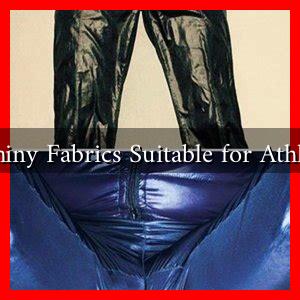-
Table of Contents
Are Shiny Fabrics Suitable for Athleisure?
The athleisure trend has taken the fashion world by storm, blending comfort, style, and functionality into everyday wear. As this trend continues to evolve, the choice of fabrics plays a crucial role in determining the overall appeal and performance of athleisure garments. One fabric that has garnered attention is shiny fabric. But are shiny fabrics suitable for athleisure? This article delves into the characteristics, benefits, and potential drawbacks of shiny fabrics in athleisure wear.
Understanding Shiny Fabrics
Shiny fabrics are typically made from synthetic materials such as polyester, nylon, or spandex, which are treated to create a glossy finish. These fabrics are often used in various clothing items, from evening wear to sports apparel. The appeal of shiny fabrics lies in their aesthetic qualities, which can add a touch of glamour and sophistication to any outfit.
Benefits of Shiny Fabrics in Athleisure
Shiny fabrics offer several advantages that can enhance the athleisure experience:
- Visual Appeal: The glossy finish of shiny fabrics can elevate the overall look of athleisure wear, making it suitable for both workouts and casual outings.
- Moisture-Wicking Properties: Many shiny fabrics are designed to wick moisture away from the body, keeping the wearer dry and comfortable during physical activities.
- Stretch and Flexibility: Shiny fabrics often contain spandex or elastane, providing excellent stretch and flexibility, which is essential for movement during workouts.
- Durability: Synthetic shiny fabrics are generally more durable than natural fibers, making them suitable for high-intensity activities.
Potential Drawbacks of Shiny Fabrics
While shiny fabrics have their benefits, there are also some drawbacks to consider:
- Heat Retention: Shiny fabrics can sometimes trap heat, making them less suitable for high-temperature workouts or outdoor activities in warm weather.
- Transparency Issues: Depending on the thickness and quality of the fabric, shiny materials can be prone to transparency, which may be a concern for some wearers.
- Maintenance: Shiny fabrics may require special care when washing to maintain their appearance and prevent damage.
Case Studies: Brands Embracing Shiny Fabrics
Several athleisure brands have successfully incorporated shiny fabrics into their collections, demonstrating their suitability for this market:
- Lululemon: Known for its high-quality athletic wear, Lululemon has introduced shiny leggings and tops that combine style with performance. Their “Nulu” fabric offers a soft, buttery feel while maintaining a subtle sheen.
- Alo Yoga: Alo Yoga features shiny yoga pants and sports bras that not only look chic but also provide excellent support and moisture-wicking properties, making them ideal for both yoga sessions and casual outings.
- Nike: Nike has experimented with shiny finishes in its sportswear lines, creating eye-catching pieces that appeal to fashion-forward athletes.
Consumer Preferences and Trends
According to a report by Grand View Research, the global athleisure market is expected to reach $257.1 billion by 2024, driven by consumer demand for versatile and stylish activewear. Surveys indicate that consumers are increasingly looking for clothing that can transition from the gym to everyday life, making shiny fabrics an attractive option.
Moreover, social media platforms like Instagram and TikTok have amplified the visibility of shiny athleisure wear, with influencers showcasing how to style these pieces for various occasions. This trend has led to a surge in demand for shiny fabrics in athleisure collections.
Conclusion
In conclusion, shiny fabrics can be suitable for athleisure, offering a blend of style, comfort, and functionality. While they come with certain drawbacks, the benefits often outweigh the negatives, especially when designed with the right technology. As the athleisure market continues to grow, brands that embrace shiny fabrics may find themselves at the forefront of this evolving trend. Ultimately, the choice of fabric should align with the wearer’s lifestyle, preferences, and intended use, ensuring that athleisure remains both fashionable and functional.
For more insights on athleisure trends and fabric choices, you can visit Business of Fashion.




